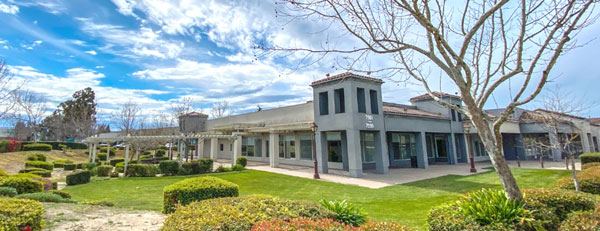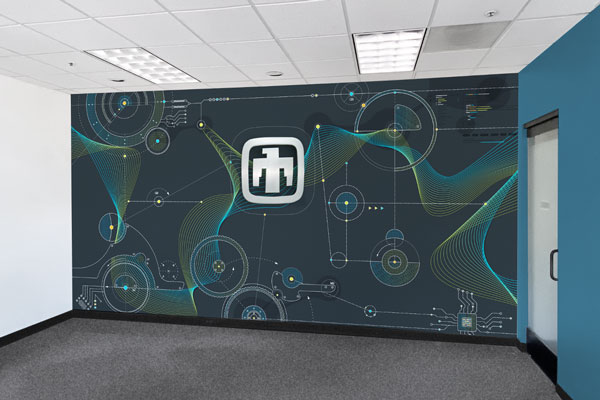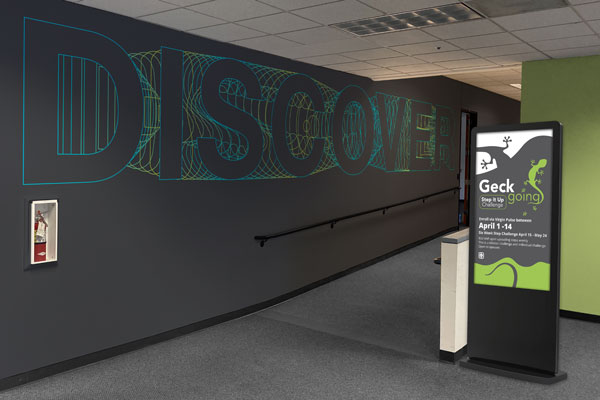COVID-19 leads to space plan changes for worker safety

Over the past few years, Sandia has experienced an unprecedented increase in hiring so that we can achieve our mission goals. This has resulted in a growing demand for offices and lab space, including at the Labs’ California site. Coupled with the need during the COVID-19 pandemic to maintain social distancing and other precautions, Facilities planners are left dealing with the challenges of ensuring the safety and security of the workforce.
“A lot of things are changing all around us,” said Andy McIlroy, associate labs director for Integrated Security Solutions. “One of the things that has been very clear to us going forward is that we are now dealing with the new realities of the COVID-19 pandemic. And we’re going to be dealing with these issues for a while — worrying about things like social distancing and other measures to keep our employees safe. In order for us to work successfully in this environment, we have had to rethink how we are using space on our campuses.”
Growth at the California campus
To accommodate current and future growth, leaders at the Livermore site have taken a multipronged approach in recent months. This approach includes leveraging continued telecommuting where possible, creating flexible “kiosk hubs,” building new facilities and temporarily leasing office space near the California campus.
Rachael Gutierrez-Stabler is a strategic planner at Sandia/California. Her work focuses on developing the division’s overall space strategy.
“Growth is typically seen as a good thing,” Rachael said. “But it certainly poses some challenges when it comes to managing space capacity.”
According to Rachael, the California site is on a trajectory to double its staff population from 2012. This growth curve has become much steeper in recent years.
Changing approach to space planning
As a result of the COVID-19 pandemic, Rachael and her colleagues have reassessed their overall space plan. Specifically, they have adapted their approach to support a gradual return to normal operations.
“One of our main strategies up until this year was ‘densification,’” Rachael said.
“But it quickly became apparent that fitting more staff in workspaces across our site is no longer a wise strategy in light of COVID-19. So, we went back and reevaluated our strategy, identifying several areas where we could make some appropriate changes.”
Those changes included converting several buildings over the summer to create more Limited Area facilities for classified activities. Space planners also helped develop kiosk hubs — flexible workspaces located across the California site. Kiosk hubs in the Limited Area can be reserved for a day at a time by anyone with the appropriate clearance level, providing more physical space to conduct classified work.
“Our kiosk hubs provide folks in some of our more densely packed work areas with flexible workspaces,” Rachael said. “If a staff member needs to be on site at the same time as an office or lab mate, the staff member can reserve a kiosk hub, gaining an opportunity to perform classified work while adhering to safety guidelines.”
The California site planners also have focused on bringing together groups that were previously scattered across multiple on-site workspaces.
“Our current efforts aim to co-locate teams wherever possible,” Rachael said. “In the past, the site population was growing so quickly that we had to fill office seats as soon as we created them. So we weren’t always able to seat folks with their teammates. We are working to remedy that.”
All along, the planners also have been pursuing new construction of additional facilities on the Livermore site, she said.
“New construction is certainly a more enduring solution, but it just so happens to be the option that takes the longest to achieve. There are a number of priority projects across our California site that we are moving forward on in order to accommodate a larger workforce.”
Lease space for expanded footprint

To further relieve some of the pressure on space and ease crowding on site, planners signed a lease this summer for additional office space to expand the footprint and serve as an extension of Sandia’s California campus. The move is expected to make available more Limited Area space on site for the growing nuclear deterrence programs being led in California. This approach is similar to actions recently taken by Sandia in Albuquerque, managing increasing space demands by moving staff to the Buena Vista office.
The lease site, which provides 27,000 square feet of additional office space, is located in the Vineyard Business Park, about three miles from the main site. The term of the lease is planned for five to seven years.
Dave Hopman manages a cross-functional team that is developing and executing the lease plan.

“The COVID-19 pandemic has made it more critical than ever to obtain and use additional space so that we can meet new distancing requirements for all members of the workforce,” Dave said. “As we’ve taken a step back and reevaluated the use of the lease facility, we have limited occupancy at the lease to roughly 60% of capacity.”
Occupants of the lease have participated in naming the complex, which will be called the Data and Information Science Center of Livermore or DISCOVER @ Vineyard. The name reflects the incoming cohort of around 80 computational data science researchers, who will have expanded opportunities for collaboration at their new facility.
“Fundamentally, these changes are driven by the nation’s growing need for Sandia to address critical national security challenges,” Andy said. “Transition and change can be difficult in the best of times. The current stressful environment is an added challenge. I thank our staff for their resilience, patience and flexibility.”